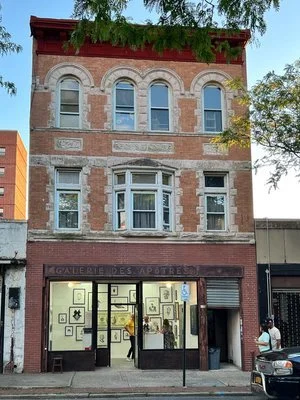Shock of the old
New Gallery Exhibition
This new show, named 'Shock of the Old', is the latest collection from Hollier's 'Imago Verbosa' series of artworks.
‘Shock of the Old’
The past 200 years have witnessed a sharp curve of technological advancement which has drastically changed people’s livelihoods in every decade. The 1910s were a pivotal decade for these advancements where inventions ranging from the telephone to the elevator to the automobile became more prevalent people’s lives. Artists of the era decided to reflect these “shocking” technological changes in their work, developing into more non-conformist, non-objective, futuristic work. These 100 years of art have been cleverly coined as “The Shock of the New” in Robert Hughes book and documentary of the same name. Hughes’ book takes us step by step through the art movements of the 20th century from art nouveau, art deco, cubism, pop, modern & post-modern.
However, with these art movements and changes also came backlash and resistance. In 1915, Ukrainian painter Kazimir Malevich debuted his “Black Square” painting that introduced non-objective styles of art by painting a white canvas black. It was essentially a piece of art for art’s sake, rather than decorative art or art used for social status. Malevich claimed his work was the first attempt at this, although there were others previous. There was outrage over the painting over its non-objectivity and “four-year-old” levels of skill put into the work.
Russian composer Igor Stravinsky received similar backlash two years prior for composing The Rite of Spring, a “non-conformist” ballet piece with choreography that was considered avant-garde, and the performance’s opening night reaction is said have incited a riot or near-riot. These are two key examples of artists whose work was unconventional and unorthodox and was met with shock, controversy, and uproar. It is worth noting, however, that these incidents could have been nothing more than publicity stunts or staged reactions to “advertise” the artwork.
For us in the present day, the real “shock” may be that the general populace back then had been this shocked to such a degree by these seemingly trivial instances. This reaction is coined “the Shock of the Old” in David Hollier’s new gallery opening to contrast Robert Hughes’ writings. This also begs the question of whether in the present day we can be shocked by anything anymore, as technology has advanced far beyond what it was in the 1910s and is continuing to change at a rapid pace.
(Text by Donovan Levine. Images courtesy of Val Daughtrey)

